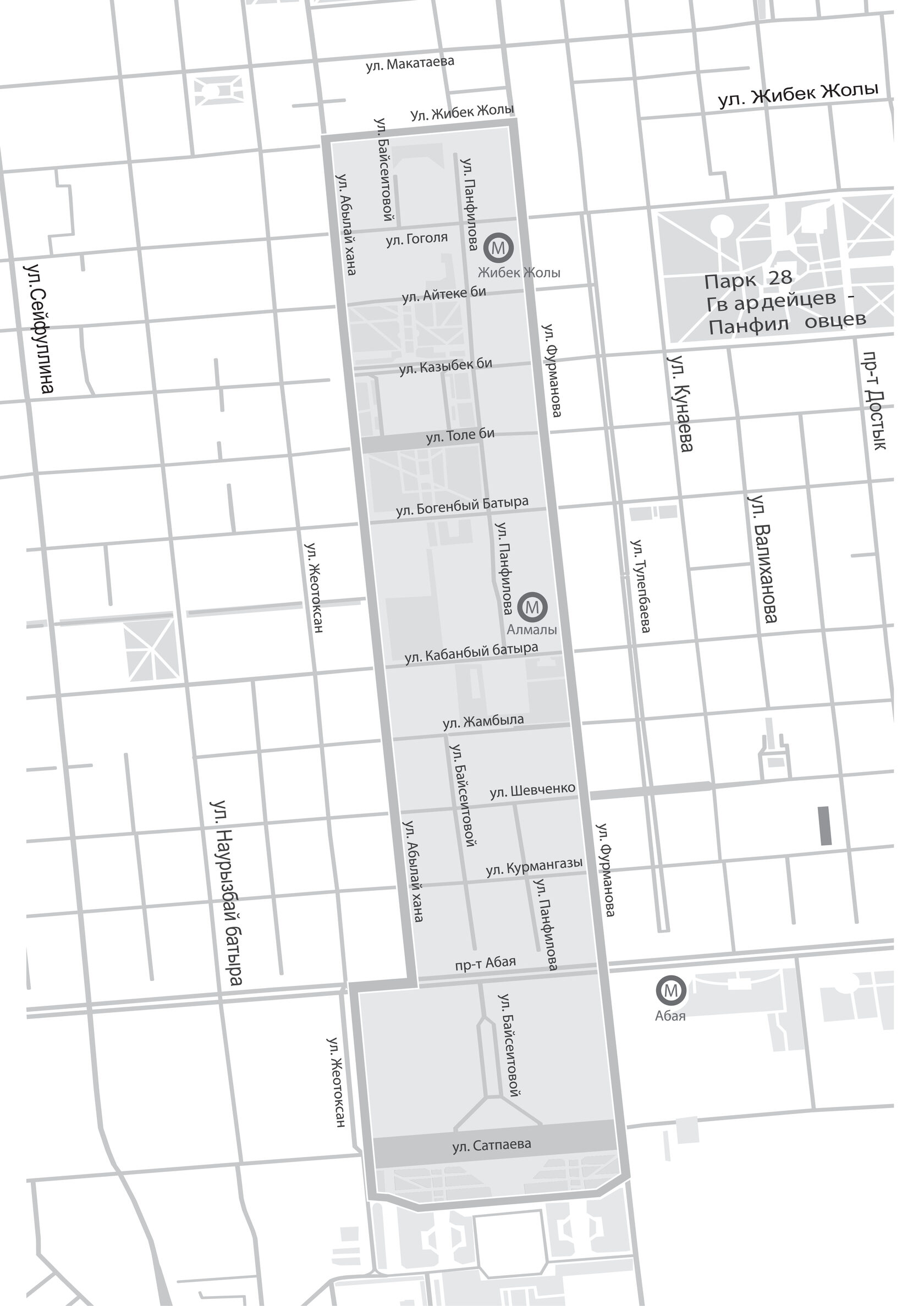Eurasian Cultural Alliance Public Association
Republic of Kazakhstan, Almaty
Nurmakov str, 79
For all inquires please contact vladislavsludskiy@gmail.com
Republic of Kazakhstan, Almaty
Nurmakov str, 79
For all inquires please contact vladislavsludskiy@gmail.com
ARTBAT FEST 4
2013
City as a Canvas
Almaty:






BY Darya Pyrkina
The main challenge of public art in the spotlight of ArtBatFest is the interaction of the pieces of art and urban environment. In comparison to traditional urban monumental sculpture, which aims mostly at solving town planning issues, public art gives new understanding to city public space, creates interventions in the existing contexts, and introduces new cooperation patterns of the public and the private, of the artistic and the unsophisticated. Public art pieces are neither structural elements of city planning nor scenery; besides most of them are temporal. Introducing their art into public space the artists break the limits of traditional representation, appeal to mass viewers, and implement the ideas of art belonging to the people and direct communication with the audience.
The urban landscape as a place for free expression is particularly topical for those who consciously avoid museums and galleries and create works that are essentially inseparable from the context. The key role is played by anti-establishment trends, movement towards the audience, art availability (not meaning possession or promotion, but direct interaction of art and viewers including participation in creation of art).
The urban landscape as a place for free expression is particularly topical for those who consciously avoid museums and galleries and create works that are essentially inseparable from the context. The key role is played by anti-establishment trends, movement towards the audience, art availability (not meaning possession or promotion, but direct interaction of art and viewers including participation in creation of art).

References in art history
Important topics of public art works are mapping, psychogeography of urban landscape, which was developed (both theoretically and practically) by members of the Situationist International in 1950-60s. As a result of 'active exploring' of Paris thorough investigation of relationships between an environment and an individual (and what is remarkable – of entire social groups and communities) the Situationists hoped to build a transformation strategy – The Revolution of Everyday Life, which was essential for their program. Later after detailed analysis of psychogeographical features of an urban area the Situationists initiated 'construction of situations', i.e. creation of some challenging circumstances that loosen the status quo and are considered as the main means of transformation.

Almaty

Almaty is a unique challenge for artistic interventions. It is located at the intersection of different identities (national, ethnic, and even geographical, as a border of a valley and mountains); it is connecting the legacy of the past (of both Soviet period and earlier times of the Russian Empire) and contemporary complex process of state establishment. The city provides the artists with numerous objects and topics for analysis and specific sites for their projects. Almaty genius loci is the central topic of festival 2013, it involves works rooted in city landscape, expressing its past and present (including future projections), critical analysis of political, cultural and social features, special aspects of town planning and aesthetic approaches of the city, since the city is being considered as an integral flexible body.
Town planning as a rectangular grid of squares is a unique feature of military settlements from the times of ancient Romans; it was used for planning Verniy Fort, and later for master general plans of Almaty development in 1860s, 1880s, 1930s, 1960s, 1990s and up to now. An important architectural concept was the idea of dynamic center, which was first initiated in the master city plan in 1968; the dynamic center is defined as a moving 'nomadic' center following the development of city organism.
Seismic activity plays a special role in typical building planning; it has determined historical (most early building in Almaty are wooden) and modern (limiting number of floors and structural features of buildings) city image.
Another essential aspect influencing Almaty layout is the idea of garden city dating back to the planning and social utopias of the end of XIX and beginning of XX centuries. City parks and farm lands (first of all the gardens of famous Aport apples) are a significant visual and backbone idea of the city and its suburbs; it was slightly lost in post-Soviet decade but not it is slowly regenerating.
Seismic activity plays a special role in typical building planning; it has determined historical (most early building in Almaty are wooden) and modern (limiting number of floors and structural features of buildings) city image.
Another essential aspect influencing Almaty layout is the idea of garden city dating back to the planning and social utopias of the end of XIX and beginning of XX centuries. City parks and farm lands (first of all the gardens of famous Aport apples) are a significant visual and backbone idea of the city and its suburbs; it was slightly lost in post-Soviet decade but not it is slowly regenerating.
Site
Almalinski District is the main site in 2013. Here Verniy Fort was started, which gave its origin to the city of Verniy, renamed as Alma Ata in 1921 and declared the capital of Kazakh SSR in 1927. Since the 1930s the district was named Stalinskiy and since the 1960s and up to the middle of 1990s it was renamed as Sovetski District. Currently Almalinski District is the heart of political, economic and cultural life of Almaty and geographical center of the city, initially the center was grouped around the junction point a little bit higher Gostindvoskiy Square (currently the Green Bazaar). This is the location of museums, theaters, and educational institutions, but there is one missing element of modern infrastructure – there is no center of contemporary art, though Tengri Umai Gallery is located here, which is actually the only active ongoing organization of contemporary art. Entrance to the streets and direct communication with the audience, 'occupation' of public space in the district by artists and declaration it a temporary outdoor museum of contemporary art suggests ways to further development of art infrastructure, as lack of organizational system of contemporary art in Almaty and in Kazakhstan in general significantly complicates the activities of artists and their interaction with the viewers.

OUTDOOR
CULTURAL TERRENKUR
INDOOR
Other projects and exhibitions within the framework of ARTBAT FEST 4:
7-18 October, 2013
VECTOR OF PERM
Exhibition of young russian artists Central exhibition hall (Almaty, Kazakhstan)
Curator: Marat Guelman
Curator: Marat Guelman
7-15 September, 2013
WHAT SEASHELLS CAN HEAR
Result of art study of Almaty space Subway,
Zhybek-Zholy station (Almaty, Kazakhstan)
Curator: Gulnur Kulkybayeva
Zhybek-Zholy station (Almaty, Kazakhstan)
Curator: Gulnur Kulkybayeva
7-21 September, 2013
THE RAPE OF EUROPE
Group exhibition Umai art museum (Almaty, Kazakhstan)
Curators: Valeriya Ibrayeva, Saule Suleimenova, Kuanysh Bazargaliev
Curators: Valeriya Ibrayeva, Saule Suleimenova, Kuanysh Bazargaliev
7-18 September, 2013
FREEWORTH2
Solo exhibition of Rikard Fåhraeus Tengri Umai Gallery (Almaty, Kazakhstan)
Curator: Tatyana Aksyonova
Curator: Tatyana Aksyonova
GALLERY























